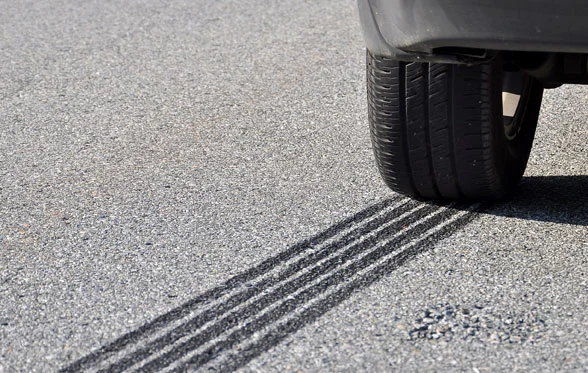The mandatory fitment of Advanced Driver Distraction Warning (ADDW) systems is one of the new safety features required by EU Regulation 2019/2144 on "the type approval requirements of motor vehicles and their trailers, and systems, components and separate technical units intended for such vehicles, as regards their general safety and the protection of vehicle occupants and vulnerable road users", more commonly referred to as General Safety Regulation 2 or GSR 2. Within (EU) 2019/2144, Advanced Driver Distraction Warning (ADDW) systems are defined as "a system that helps the driver to continue to pay attention to the traffic situation and that warns the driver when he or she is distracted".
Note that Advanced Driver Distraction Warning (ADDW) systems are different to Driver Drowsiness and Attention Warning (DDAW) systems, the fitment of which are also required by (EU) 2019/2144. DDAW systems "assess the driver's alertness through vehicle systems analysis and warn the driver if needed", and the technical requirements which such systems must comply with are specified in Delegated Regulation (EU) 2021/1341.
As specified in (EU) 2019/2144, the fitment of an ADDW system becomes mandatory for all new types of M and N category vehicle (i.e. all passenger carrying and goods carrying motor vehicles) from July 7, 2024, and becomes mandatory for all new vehicles falling into those categories from July 7, 2026.
To support the mandatory introduction of ADDW systems, the European Commission have been developing a Delegated Regulation to specify the necessary technical requirements and test procedures for such systems over the past three years. This work culminated with the publication of Delegated Regulation (EU) 2023/2590 in the Official Journal of the European Union on November 22, 2023.
This new Delegated Regulation specifies that the ADDW system must monitor the direction of the driver's gaze, i.e. the direction in which the driver is looking, whenever the system is in operation. To determine when the driver's attention is "distracted", the draft Regulation defines a specific downward vision area, which is likely to include the driver's lap, the passenger footwell, the centre console, etc. The driver'sattention is considered to be "distracted"if the driver's gaze if fixed in this area for a prolonged period (refer to performance criteria bullet point below for details on time periods).
Within (EU) 2023/2590, the key technical requirements that ADDW systems must comply with include requirements on:
- Operating conditions -Specifying the conditions under which the system must be operable, e.g. the ADDW system must be automatically activated at speeds above 20km/h, the system must operate under both daytime and night time conditions, etc.
- Performance criteria -Specifying that, at speeds between 20km/h and 50km/h, the ADDW system must give a warning if the driver's gaze remains within the defined "distracted"vision area for more than 6 seconds. For speeds above 50km/h, the ADDW system must give a warning if the driver's gaze remains within the defined "distracted"vision area for more than 3.5 seconds.
- Driver warnings -Specifying that the ADDW system must provide a visual warning, plus an acoustic and/or haptic warning whenever driver distraction is detected. These warnings may cascade and intensify until the driver distraction ceases.
- System failure -Specifying the failures within the ADDW system which must be detected and how they must be advised to the driver.
- Roadworthiness testing provisions -Specifying how the correct operational status of the ADDW system must be able to be determined during a roadworthiness test.
To confirm compliance with the performance requirements, the Delegated Regulation specifies a number of "spot-check"test procedures which a representative vehicle, equipped with an ADDW system, must be subjected to. These "spot-check"tests may be carried out under real environmental conditions on a test track or under simulated environmental conditions on a driving simulator. The "spot-check"test procedures define a number of "gaze fixation points", e.g. the driver's left knee, glove box, air vents, etc., and checks to confirm the correct operation of the system are carried out with the driver's gaze directed at each of these points. These "spot-checks"must be carried out at both a lower speed, 20-35km/h and at a higher speed, 50-65km/h. If the ADDW systemdoes not trigger a warning during any of these "spot-checks", the "spot-check"can be repeated up to two times.
In addition to the "spot-check"testing, the vehicle manufacturer must also compile a documentation package containing technical details of the ADDW system, its operation and any limitations, details of the test procedures used to determine the effectiveness of the ADDW system and a full set of test results from the validation tests undertaken on the ADDW systems using human participants. The Technical Service will fully assess all of the information contained within this documentation package to ensure that all aspects of the ADDW system’s design, operation and performance have been duly considered and that the test results from the validation tests adequately demonstrate compliance with the specified requirements.
